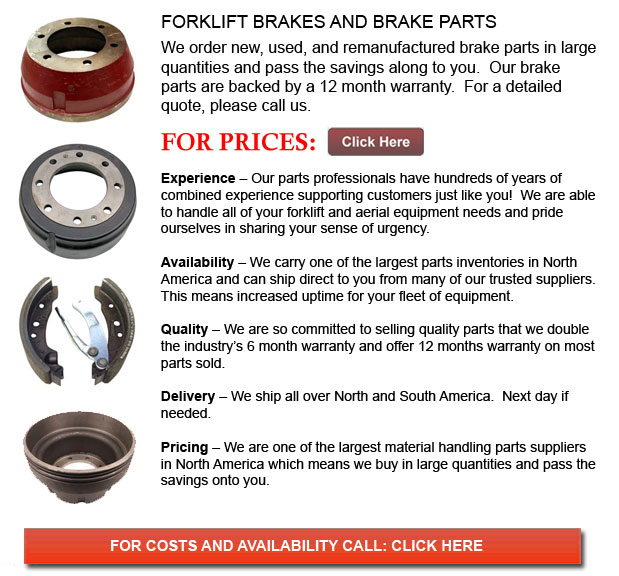
Forklift Brakes - A brake drum is where the friction is supplied by the brake pads or brake shoes. The shoes or pads press up against the rotating brake drum. There are some different brake drums kinds along with particular specific differences. A "break drum" would generally refer to if either pads or shoes press onto the interior surface of the drum. A "clasp brake" is the term utilized to describe if shoes press next to the exterior of the drum. Another kind of brake, called a "band brake" uses a flexible belt or band to wrap all-around the outside of the drum. Where the drum is pinched in between two shoes, it can be known as a "pinch brake drum." Like a typical disc brake, these kinds of brakes are quite uncommon.
Before 1955, old brake drums needed constant modification periodically so as to compensate for shoe and drum wear. "Low pedal" or long brake pedal travel is the hazardous end result if adjustments are not done sufficiently. The vehicle could become hazardous and the brakes could become ineffective whenever low pedal is combined with brake fade.
There are various Self Adjusting Brake Systems existing, and they could be categorized within two main kinds, RAD and RAI. RAI systems have inbuilt equipments which avoid the systems to be able to recover when the brake is overheating. The most well known RAI manufacturers are Bosch, AP, Bendix and Lucas. The most well-known RAD systems include Volkswagen, VAG, AP, Bendix and Ford recovery systems.
The self adjusting brake will typically only engage if the forklift is reversing into a stop. This method of stopping is satisfactory for use whereby all wheels use brake drums. Disc brakes are used on the front wheels of motor vehicles nowadays. By operating only in reverse it is less possible that the brakes would be adjusted while hot and the brake drums are expanded. If tweaked while hot, "dragging brakes" could occur, which increases fuel expenditure and accelerates wear. A ratchet mechanism which becomes engaged as the hand brake is set is one more way the self adjusting brakes could function. This means is only appropriate in applications where rear brake drums are utilized. If the parking or emergency brake actuator lever goes beyond a specific amount of travel, the ratchet advances an adjuster screw and the brake shoes move toward the drum.
Placed at the base of the drum sits the manual adjustment knob. It could be adjusted utilizing the hole on the other side of the wheel. You would have to go under the vehicle together with a flathead screwdriver. It is extremely essential to adjust every wheel evenly and to move the click wheel correctly because an unequal adjustment can pull the vehicle one side during heavy braking. The most effective method so as to guarantee this tedious task is accomplished carefully is to either lift each wheel off the ground and hand spin it while measuring how much force it takes and feeling if the shoes are dragging, or give each one the exact amount of clicks manually and then perform a road test.
![]() Click to Download the pdf
Click to Download the pdf
Forklift Parts
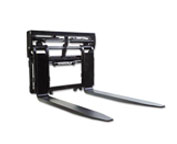


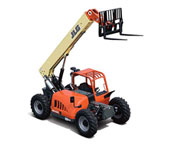
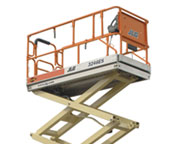
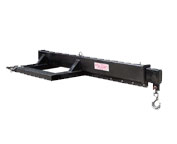


Lift Parts Express
TOLL FREE: 1-888-695-7994
Minneapolis, Minnesota
forkliftpartsminneapolis.com
Email Us
About Us


